Frank B. Devine: Pioneer of Riverside's Citrus Packing Industry
From New York businessman to Sunbeam brand founder, Devine shaped local citrus shipping for nearly four decades.
A look back at Glenwood Stables, its role in early Riverside transportation, and the man who bridged the city’s shift from stagecoaches to automobiles.

With the high cost of new (or new “used”) vehicles continually rising, the price of gas so high, expensive insurance, and clogged freeways, I sometimes think it might be nice to go back to the simple days of horse and buggy. But then I wonder: How much does a horse cost? What about the price of hay and oats? Then there is the daily care of the animals. And what does one do with all that manure the roses produce? I guess each age has its pros and cons.
This all came to mind when I looked at the list of some of Wallace J. Miller's paintings of Riverside businesses from the late 1890s. One of those businesses was the Glenwood Stables operated by Edward E. Miller. Edward was not related to the artist Wallace, but he was the younger brother of Frank A. Miller, the owner of the Glenwood Mission Inn.
Edward E. Miller was born in 1863 in Tomah, Wisconsin, the youngest of Christopher Columbus and Mary Ann Miller's four children. He was ten years old when the family left Tomah to join C. C. Miller in Riverside, where he had found employment as a surveyor. Ed and his brother Frank helped build the family home, an old adobe structure that grew into the Glenwood Inn when Albert White became the first paying guest in November 1876. Ed accompanied his father and helped him on some of his surveying trips.

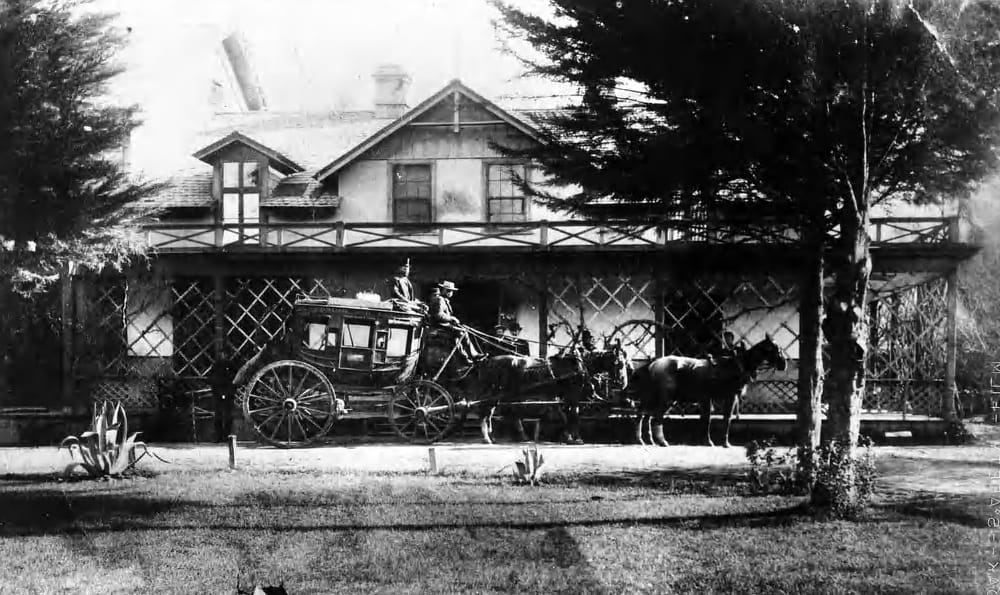
From left to right: Edward Miller in 1896 (Courtesy of the Museum of Riverside), Glenwood Stage before the Glenwood Old Adobe Inn. Some sources identify the driver as Ed (Courtesy of the Mission Inn Foundation).
As a young man, he drove the old four-horse stage from the Glenwood to the Southern Pacific train station in Colton to carry passengers back to Riverside. At the time of his death, a reporter stated that the stage was still in existence and that Ed had driven it just a few years ago in a parade using his old whip.
Venturing out on his own, Ed Miller went into the livery stable business. He joined E. F. Thayer in operating the City Livery Stable on Main Street in the Dickson Block between Seventh (Mission Inn Avenue) and Eighth (University Avenue) streets. A later newspaper article noted that Ed was always fond of horses and, as a youth, was often seen mounted on the back of a horse, dashing through the city streets.
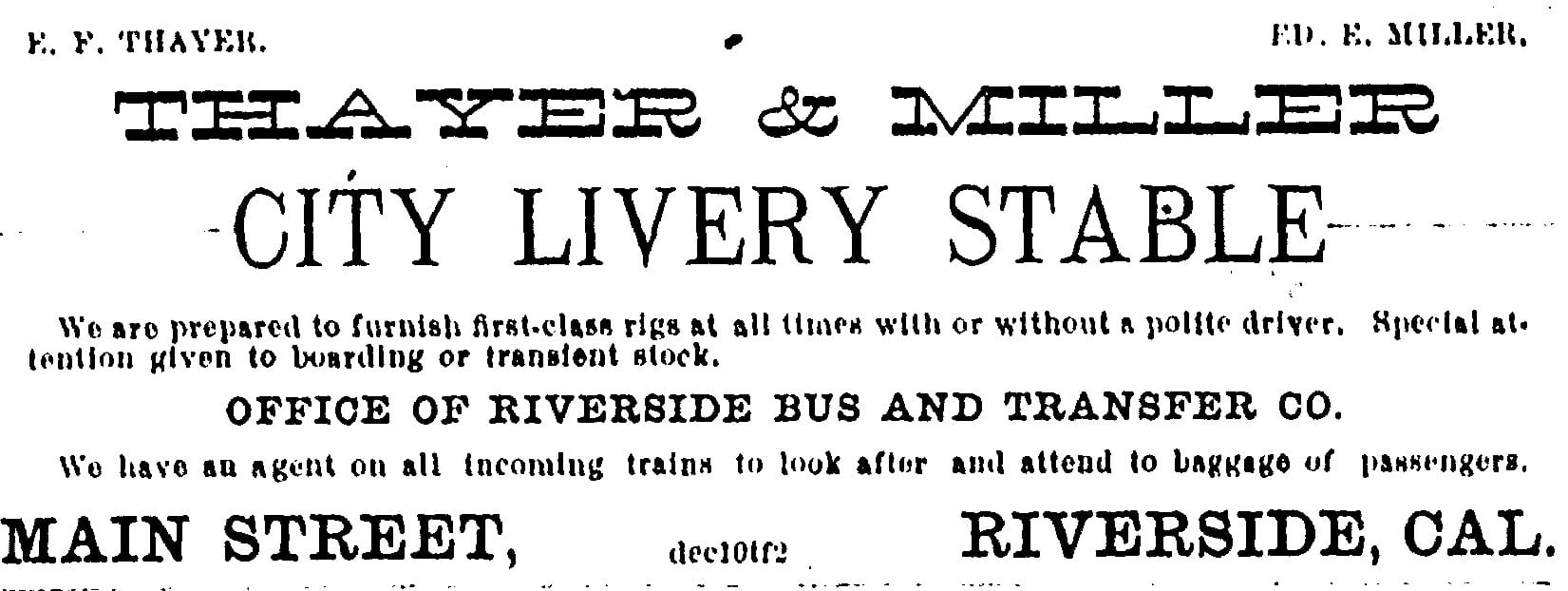

From left to right: December 1887 advertisement announcing “polite drivers”, Ad for Stabel Manure. (Riverside Daily Press)
Their advertisement announced that they were the agent for all train passengers. They boarded stock for others and rented out first-class rigs, with or without a “polite driver.” Riverside had become a destination, especially for winter visitors, and Thayer and Miller served that tourist trade.
Sometime before June 1896, Ed moved his business to the southwest corner of Sixth and Main streets and became the sole proprietor. He rented the first floor of the Armory Building, with other firms on the second and third floors. Miller boasted a tally-ho with a top that could comfortably carry 14 passengers, along with room for baggage or a picnic lunch. Parties could travel to Cold Water Canyon or other resort areas.
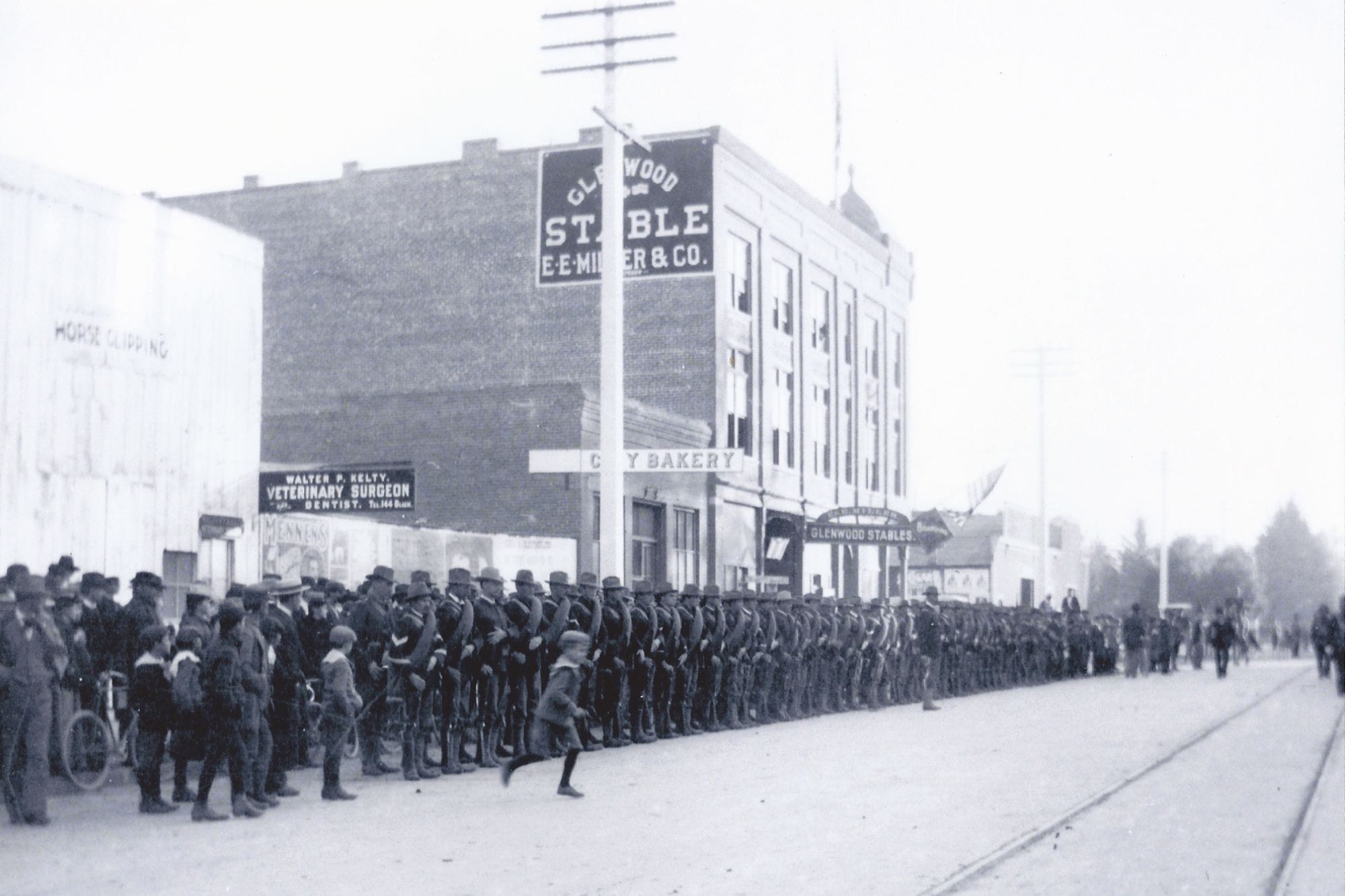
Additional information can be gleaned from the Wallace Miller painting and the parade photo. Wallace's painting states that the Glenwood Stables was “The Leading Stable of the City,” offering journeys along Magnolia and Victoria avenues, trips to Redlands, and other points of interest. It looks as if there are wagon or buggy entrances on both Main and Sixth streets. Miller’s phone number was 121 Black. The photograph shows the opposite side with the City Bakery next door. On the side is a painted sign for Walter Kelty, veterinary surgeon and dentist. At various times, newspaper ads listed either W. B. Elliot, D.V.S., or Dr. Walter P. Kelty as operating a veterinary office in the Glenwood Stable area. Elliot shared the same phone number with Miller: Black 121.
What does one do with all the manure produced by a stable of horses? Ed advertised in the newspaper, “FOR SALE – STABLE MANURE.”
On April 1, 1897, a phone caller played an April Fool’s joke on the Glenwood Stable staff. The caller asked for a carriage to pick up passengers at 1320 Locust Street. An employee named Barney drove the tally-ho to the address and discovered that the only residents were those buried at Evergreen Cemetery.
In August 1901, Ed Miller took a brief respite from the livery business and transferred ownership of the Glenwood Stables to H. W. Fletcher. But it was hard for Ed to stay out of the horse business. In July 1902, Miller purchased a half interest in the Glenwood Stables from Fletcher and became partners. The partners, the next month, purchased $1,500 worth of new Columbus surrey carriages, which were said to be pneumatic road wagons with rubber tires.
Meanwhile, Ed’s brother Frank opened the new Glenwood Mission Inn at the beginning of 1903, with the U-shaped Mission Wing designed by Arthur Benton.
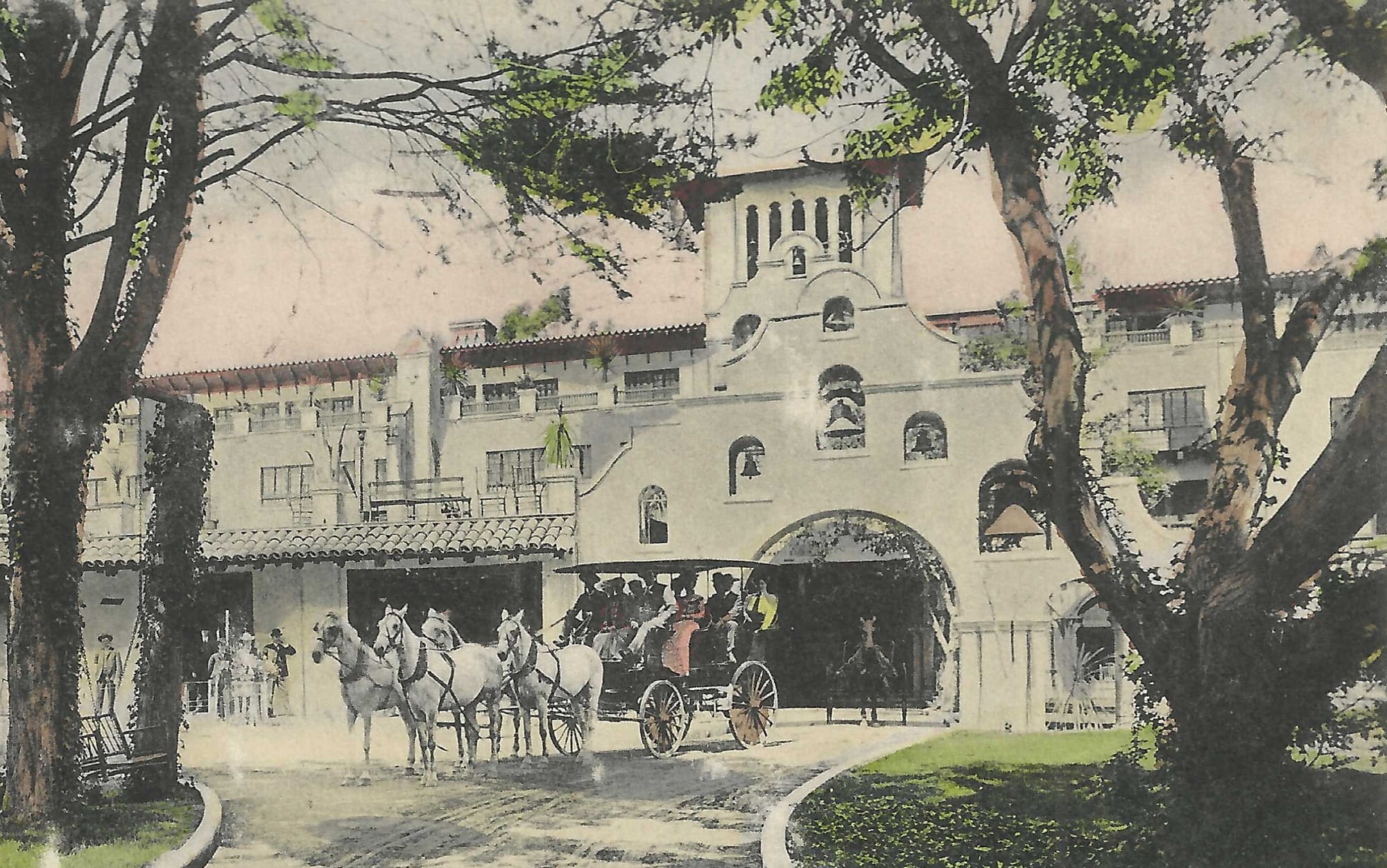
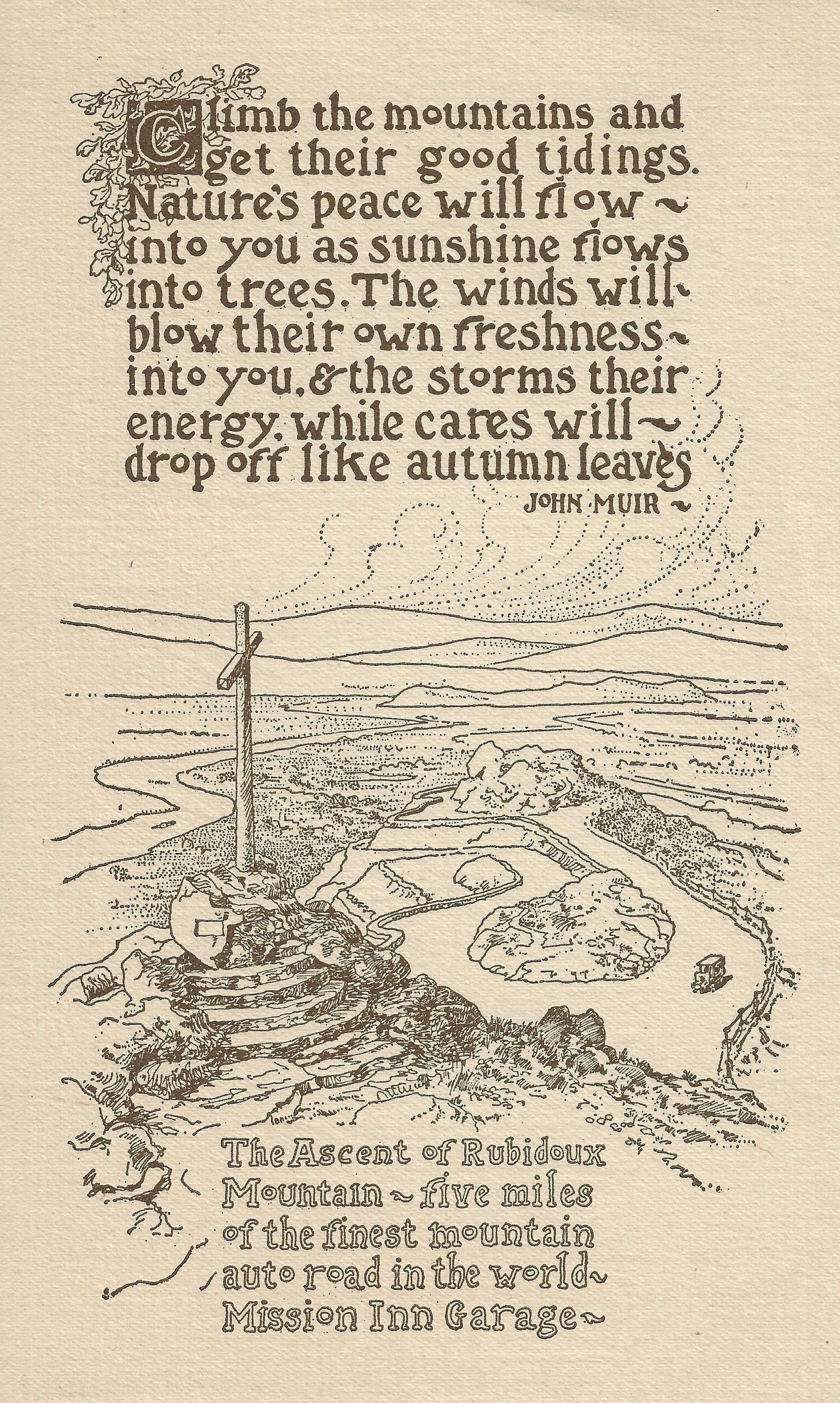
From left to right: Postcard of Tally-ho in front of the new Glenwood Mission Inn (Author’s Collection), Promotion Card for Mission Inn Garage Trips up Mount Rubidoux (Courtesy of Claudia Rodriguez).
Late in 1903, the Glenwood Stable moved from Sixth and Main to the corner of Seventh and Market, soon becoming the Glenwood Garage. George Frost had bought the Armory Building and remodeled it for a post office and George N. Mott Furnishing Store.
The reliance on horse and buggy shifted drastically in 1906 when Frank Miller purchased ten Stern touring cars for his Mission Inn. Ed’s duties also changed as he became the main driver for his brother’s fleet of new vehicles. Ed often played the song “In My Merry Oldsmobile” on the Inn’s carillon to drum up business for the touring cars. The good old days of horse and buggy were quickly passing. Ed Miller continued to work for his brother Frank in various capacities until shortly before his death on March 11, 1922.
Let us email you Riverside's news and events every morning. For free!